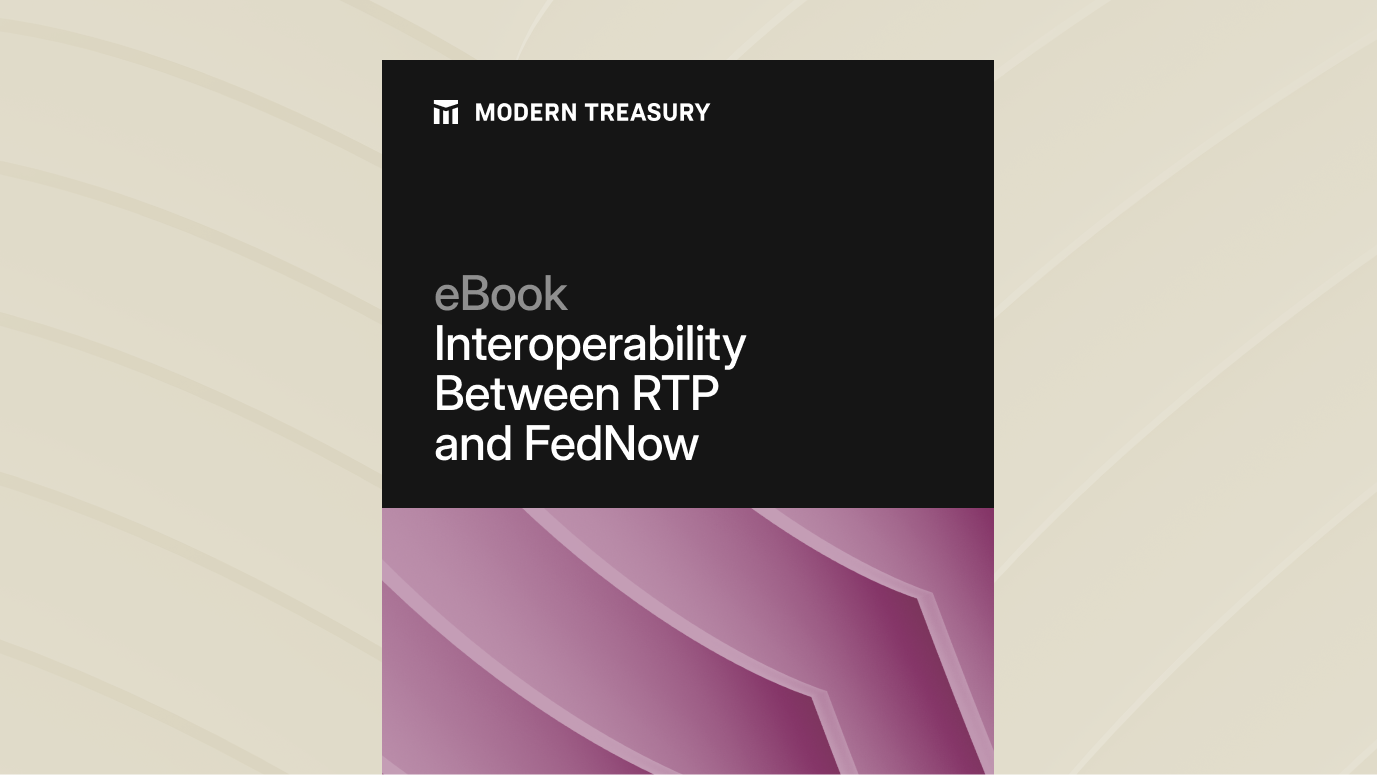Join us at Transfer 2025 to hear how industry leaders are building payments infrastructure for a real-time world.Register Today →
Managing ACH Returns at Scale
Companies need a proactive solution for handling ACH returns. Learn why ACH returns matter, what the potential business impacts are, and how companies can prevent and manage returns at scale.

As companies scale, handling ACH returns efficiently becomes a priority. Like chargebacks, returns are less than optimal for businesses. While some returns are unavoidable, companies can take proactive steps to reduce the number of ACH returns they receive. A systematic process for handling returns is also key for companies that move money, especially those looking to expand.
What Companies Can Learn From ACH Returns
The volume of payments processed by the ACH network has been increasing steadily for over ten years. In 2022, the network processed 30 billion payments, amounting to $76.7 trillion, and representing an increase of 3% and 5.6% respectively over the previous year. This growth isn’t surprising given that ACH payments are cost-effective and convenient for businesses, with significant benefits over cards.
For this reason, companies need a thoughtful approach to ACH returns. Returns indicate a gap between expected and actual outcome—a gap that opens companies up to liability.
Depending on the industry, returns can be a major issue. For HR and payroll services, as an example, if a bank rejects an ACH credit (or direct deposit) to an employee from their customer’s bank account, that employee won’t receive their wages. For context, these companies send millions of paychecks—if even a small percentage fail, that constitutes a lot of money. And with 62% of Americans living paycheck to paycheck, an ACH return in this scenario could have serious consequences (for impacted employees and a company’s brand image).
There are 80+ ACH return codes and several provide important account data. For example, if an account holder is deceased (R15 or R14) or a business needs to update a routing number (R12), which happens when banks merge, this information needs to be accounted for. The latter can also warrant a Notification of Change or NOC (for routing numbers, CO2 or CO3). There are 50 distinct NOC codes that provide information about a user account that a company should be prepared to update or address.
ACH returns indicate a problem with the initial payment but scale intensifies the issue—and magnifies associated challenges. Whereas manually managing returns may be feasible when companies first launch, as they grow, this becomes both highly inefficient and high risk.
The more ACH payments a company processes, the more ACH returns they are likely to receive. For most companies, receiving ACH returns is likely a bigger concern than originating ACH returns. If an ACH payment allows users to take actions in an application, companies need to know the money is actually there.
Understanding Returns: Challenges and Impacts
A few characteristics of ACH returns make them particularly difficult for businesses.
Time frames vary
ACH returns operate on variable time frames depending on the type of return. Although most ACH returns happen quickly, there is an acceptable range of 2-60 days for some returns—depending on whether you’re a business or consumer—making it challenging to predict cash flow. Some companies incorporate a “seasoning period” wherein payments are held for three days, after which the company assumes they aren’t likely to be returned. However, this approach is far from foolproof.
Attribution is tricky
ACH return attribution can be challenging, especially when a lot of payments look the same (i.e., a company offers many products or services at the same price point). Further, as a veteran Modern Treasury engineer puts it, the standards aren’t standard. Although there are rules for formatting on ACH returns, each RDFIs may interpret those guidelines differently. For multi-banked companies, each bank may be using a different format. It’s also possible that companies include important identifiers in the payment order that don’t appear in the return.
The stakes are high
Nacha’s returns limits mean companies can be removed from the network if they are flagged for receiving too many returns. Business impacts can also be significant. A high ACH return rate and poor return handling can literally cost companies time (staff time handling returns) and money (staff time and money lost when returns occur). Further, businesses have less accuracy when it comes to a real-time financial picture which can negatively impact decision making.
Preventing ACH Returns
Successfully managing ACH returns requires thoughtful prevention in tandem with systematic return handling. Companies may choose to forgo this process in light of limited resources and sufficient risk tolerance. However, as previously mentioned, what might be acceptable at smaller companies can swiftly become a major problem at scale.
Proactively avoiding returns centers around the following steps.
1. Account and funds verification
As part of new customer onboarding and customer banking account updates, companies should verify the user’s account. This requires ensuring the counterparty details are correct. It should be noted that the fewer people and tools this information passes through, the fewer potential points of failure.
There are two main approaches to this process:
- Microdeposits are an option in which a business sends small amounts of money to the user bank account they are verifying. Downsides here include a reliance on customer communication and potential edge-case failures. Modern Treasury’s microdeposit verification API safeguards against failures and requires only three API endpoints to execute.
- ACH Prenotes are another option wherein a company sends a zero dollar payment to validate the customer account. An upside of prenotes is their ability to help discover debit blocks, but a potential complication is that the issuing bank only has to respond to a prenote if an account does not exist. This means it’s possible for companies to transact with an incorrect account number at the right bank.
A few additional resources include:
- Plaid, a partner company that can verify accounts without touching sensitive bank account details. Via our integration with Plaid, Modern Treasury customers can opt to receive a processor token instead of the bank details, to protect customers and decrease liability. Plaid also makes it possible to perform NSF checks, as “non-sufficient funds” are a primary source of ACH returns.
- Modern Treasury’s Pre-Built UIs, a set of low-code tools that simplify onboarding and in-app payments. Customers can create a custom branded form and Modern Treasury collects the required information from customers.
2. Clear, proactive communication
Nearly everyone can relate to the experience of seeing a charge in their bank account from an unfamiliar source. Businesses that transact using an account or name customers don’t immediately recognize are likely to encounter more returns. Clarity can help.
Make sure customers know when money is coming out and what they’ll see in their bank account. As an example, it’s become common practice for cell phone companies and loan providers to text and email customers a few days before a payment is due, providing them with this information.
Businesses should be considerate with their statement descriptor so it’s recognizable. For those with a parent company, the customer needs to see a business name or some kind of familiar context. This is especially important when the biller might change (i.e., through mergers or acquisitions).
Managing Current ACH Returns
Even with robust deterrents in place, ACH returns can still occur. When companies receive returns, there are three best practices for managing them.
1. Diligent return handling
Many companies have created systems for handling more common return codes. While writing logic for a handful of return types is feasible, what about the less common types? To be fully prepared to handle ACH returns at scale, companies need systematic handling for all 80+ return codes, as well as a system for handling 50+ NOCs.
To complicate matters, each RDFI is likely to manage returns distinctly. They may use APIs, unique file types, or neither. Modern Treasury’s Payments product manages all return codes and NOCs—each is handled as a unified object that isn’t dependent on any one bank. If a company built this in-house, they would have to ensure they were correctly creating and extracting returns from each banking source.
2. Accurate reconciliation
ACH returns can complicate bank reconciliation, as each return generates three items to match up: the original payment (the credit), the return, and the debit. If transactions with returns aren’t reconciling, a few scenarios are likely:
- A transaction is missing
- The money movement data is missing (i.e., the return transaction doesn’t have enough data to link to the originated payment)
- The ACH return itself is missing
If they are unable to resolve it, a company may have to contact the bank or re-pull payment statuses. Modern Treasury manages this process, one which would be prohibitive at scale. For a company to build this functionality on their own, they would have to write a matching engine, and then maintain it and keep it up to date.
Reconciliation serves an essential function, especially for ACH returns, to make sure that payments are working as they should.
3. Monitoring returns against Nacha rules
Companies are responsible for monitoring their ACH return rate against Nacha’s return risk thresholds, per the following three categories:
- For Unauthorized Debits, including R05, R07, R10, R29, and R51, the return rate can be no higher than 0.5%
- For Administrative Returns, including R02, R03, and R04, the return rate can be no higher than 3.0%
- For Overall Returns, the return rate must be 15% or less
A company’s failure to stay within these thresholds can impact their ability to take on new bank partners and endanger their ability to participate in the ACH network at all. Modern Treasury now tracks each client’s ACH return rate automatically, to help companies keep tabs on where they stand.
A Robust Solution for ACH Returns
As they scale, many companies continue trying to manage ACH returns manually or they try to build a solution in-house. However, growth can put an incredible burden on companies that go either route, and the resources required (not to mention the risk involved) just don’t add up over the long term.
Modern Treasury was built to help companies simplify payment operations—and that includes both preventing ACH returns from happening in the first place, and handling complex cases when customers do inevitably get returns. Reach out to learn more.
These problems aren’t limited to issues with the initial payment instructions. Other problems can include an ACH debit return when a counterparty doesn’t have sufficient funds (NSF), or when the instructions are correct the payment was not authorized by the recipient (e.g., a customer who calls their bank to dispute a debit, which their bank then returns).
It should be noted that microdeposits and prenotes can only verify that an account can receive payments, not who owns an account. For this reason, KYC is also important. Fraud is much less likely when an account is linked to someone’s real identity.
Try Modern Treasury
See how smooth payment operations can be.







